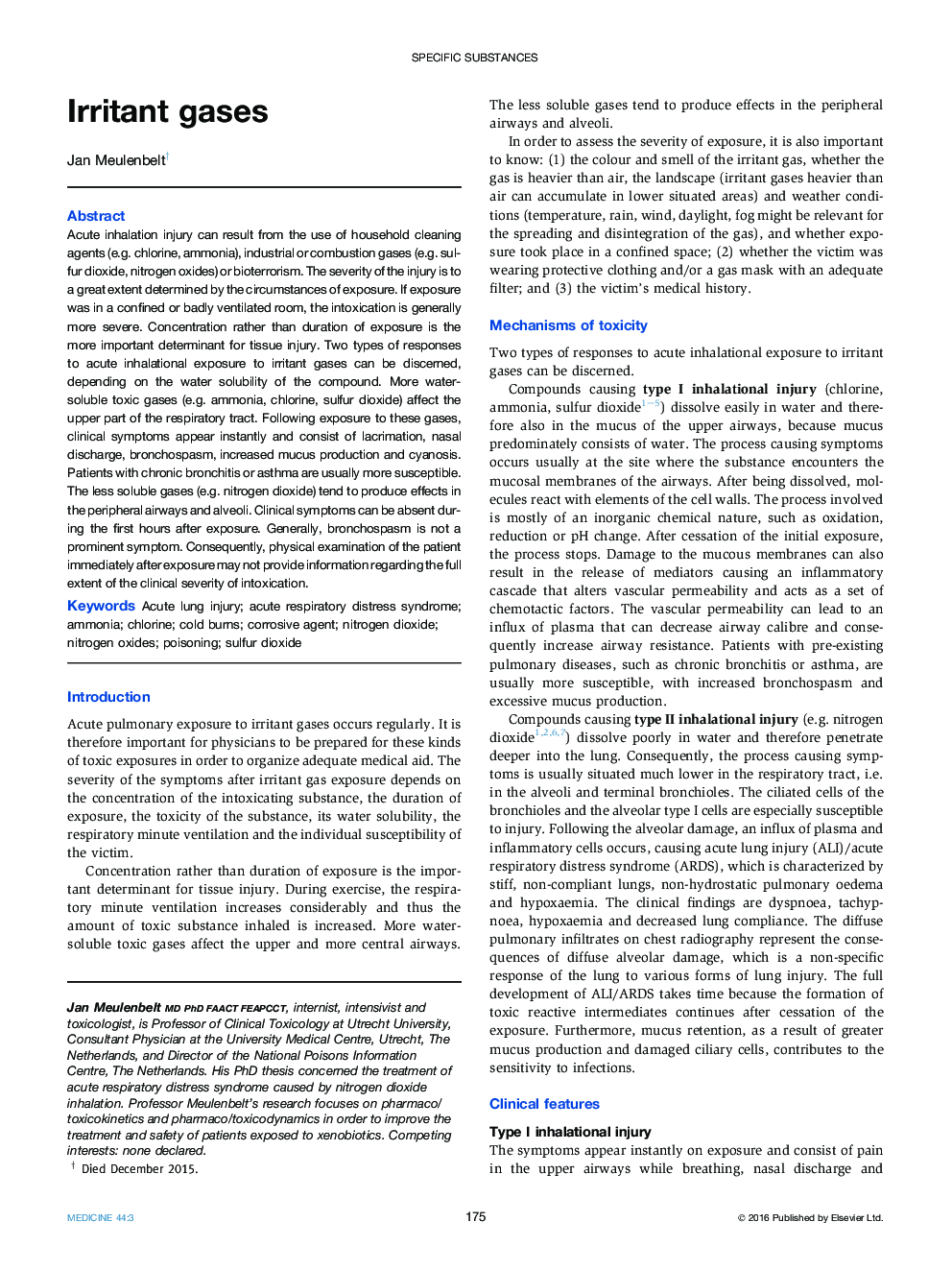| کد مقاله | کد نشریه | سال انتشار | مقاله انگلیسی | نسخه تمام متن |
|---|---|---|---|---|
| 3806643 | 1245309 | 2016 | 4 صفحه PDF | دانلود رایگان |
Acute inhalation injury can result from the use of household cleaning agents (e.g. chlorine, ammonia), industrial or combustion gases (e.g. sulfur dioxide, nitrogen oxides) or bioterrorism. The severity of the injury is to a great extent determined by the circumstances of exposure. If exposure was in a confined or badly ventilated room, the intoxication is generally more severe. Concentration rather than duration of exposure is the more important determinant for tissue injury. Two types of responses to acute inhalational exposure to irritant gases can be discerned, depending on the water solubility of the compound. More water-soluble toxic gases (e.g. ammonia, chlorine, sulfur dioxide) affect the upper part of the respiratory tract. Following exposure to these gases, clinical symptoms appear instantly and consist of lacrimation, nasal discharge, bronchospasm, increased mucus production and cyanosis. Patients with chronic bronchitis or asthma are usually more susceptible. The less soluble gases (e.g. nitrogen dioxide) tend to produce effects in the peripheral airways and alveoli. Clinical symptoms can be absent during the first hours after exposure. Generally, bronchospasm is not a prominent symptom. Consequently, physical examination of the patient immediately after exposure may not provide information regarding the full extent of the clinical severity of intoxication.
Journal: Medicine - Volume 44, Issue 3, March 2016, Pages 175–178
